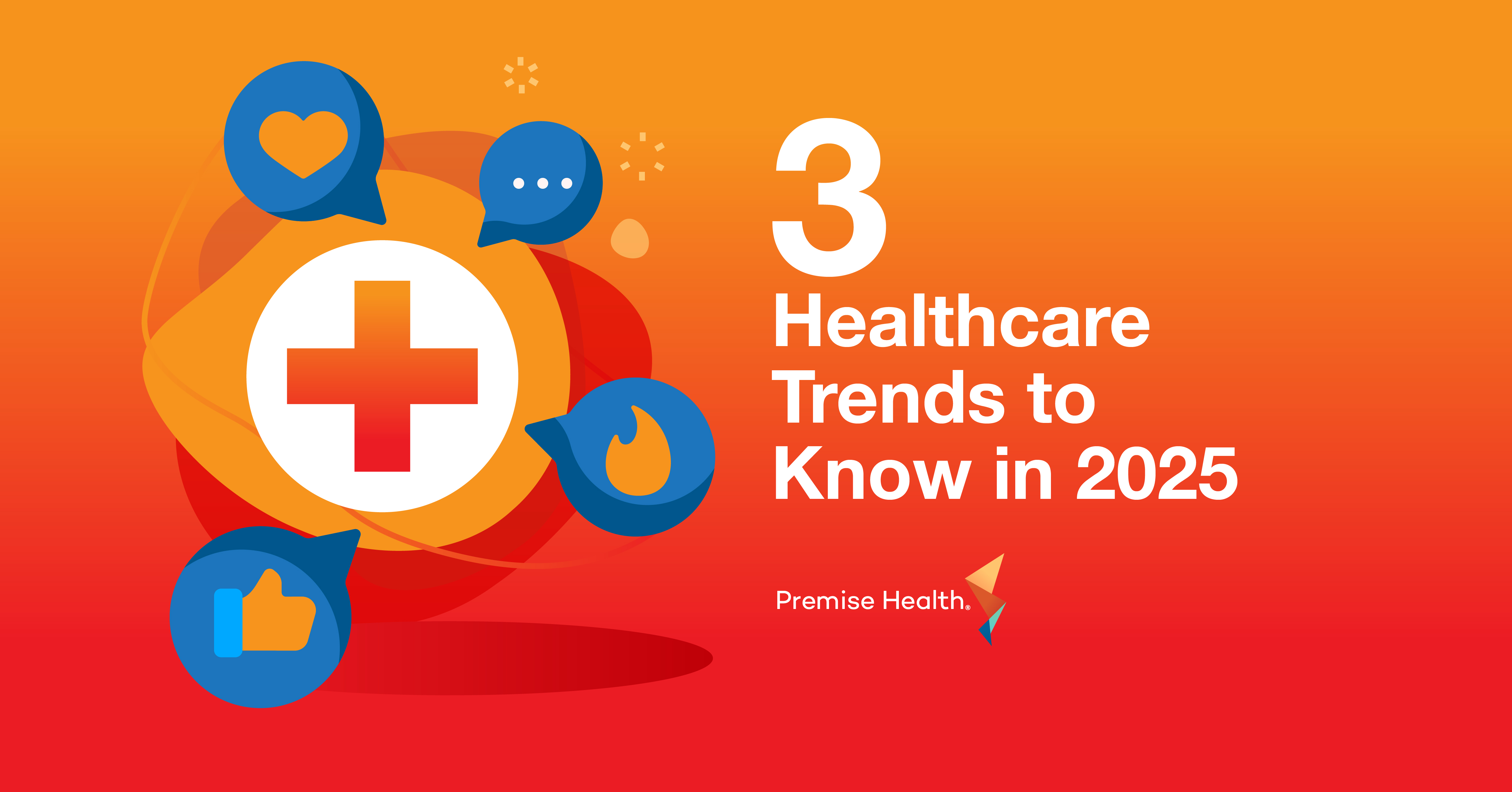3 Healthcare Trends to Know in 2024
Things change quickly across the healthcare benefits landscape and keeping up to date is important in planning for the future. To help you in that effort, we’ve collected three notable trends heading into 2024.
Employees Are Still Delaying Care, but Not Because of COVID-19
The COVID-19 pandemic caused individuals to delay receiving preventive and routine care on a large scale. Employers are bracing for the long-term ramifications, including a higher rate of chronic and serious conditions due to skipped preventive care. However, it may be too early to focus solely on dealing with that aspect, as people are still avoiding routine visits — only for different reasons. Integrated Benefits Institute surveyed 5,003 employees and found that 58% of respondents delayed necessary medical care because of cost and insurance barriers. Forty-two percent delayed care due to no appointment availability (employees were able to select more than one reason).
Employers are taking steps to encourage people to get the care they need, as Business Group on Health’s 2024 Large Employer Health Care Strategy Survey showed. It found large employers are increasing focus in four areas of healthcare for 2024:
- Access (70%)
- Experience (68%)
- Quality (62%)
- Affordability (61%)
Employees need accessible care that doesn’t break the bank
The data is clear: the biggest reason for someone to miss routine care is cost, followed by access. One way employers can make it easy for their people to engage with primary care providers is offering an onsite or nearsite wellness center as a benefit. This type of healthcare is more affordable for members, as it has low or waived co-pays. When cost is not a barrier, members are more likely to get preventive care and avoid the expensive, serious conditions that arise from delaying care.
Healthcare Costs will Continue to Rise in 2024
Rising healthcare costs are another trend that started with the COVID-19 pandemic. Hospital and health system expenses went up during that time, which led to higher prices. Inflation has also played a role. The result? Healthcare is now more expensive than ever for organizations and their people.
Employers shouldn’t expect a reprieve from rising costs, though, as they will continue to increase in the coming years. PricewaterhouseCoopers’ Health Research Institute (HRI) released a report projecting medical costs to increase 7% in 2024, following on the heels of a 6% increase in 2023. Year over year increases to cost are creating challenges for companies, as costs can outpace an organization’s ability to grow business to keep up.
Levelling out and decreasing future costs is critical
Finding the right resources and partnerships to actively reduce costs is becoming critically important as organizations strive to mitigate these increases. It’s critical to address this now with a solution that can flatten out the increase, then work to reduce your population’s total cost of care. Onsite and nearsite wellness centers, for instance, save employers an average of 25% on their employees’ and dependents’ total cost of care, according to a study conducted by Premise Health. The study also found that these wellness centers can increase primary care visits while reducing emergency room services and inpatient hospital admissions, two of the biggest cost drivers of employer healthcare spend.
Employers Need a Comprehensive Approach to Helping Their Population Manage Their Weight
One final trend for 2024 is that employers will continue to focus on evolving GLP-1 drugs and the role they play in benefits and healthcare. This intense focus is deserved: GLP-1 drugs can have incredible results in terms of weight loss and managing diabetes. However, they also are expensive and are recommended to be combined with other lifestyle changes to have a lasting impact.
The landscape for GLP-1 drugs continues to evolve. As they receive regulatory approval to treat obesity, separately from diabetes, the share of a given population eligible for prescriptions is increasing dramatically. Employers need to carefully consider how they approach the question of weight loss moving forward to make sure they aren’t replacing the costs associated with chronic conditions with similar costs for long-term prescriptions.
GLP-1s are a useful tool, but don’t forget the toolbox
Appropriate use of GLP-1 drugs should be part of a comprehensive approach to helping employees manage their weight alongside other conditions like diabetes or hypertension. When employers cover these drugs as part of employee benefits, an evidence-based medicine approach says they must be used in combination with resources to make healthy behavior changes in all areas of their lives. These types of resources may include whole-person healthcare with a lifestyle medicine approach, alongside services like pharmacy, care management, fitness, and nutrition.
A comprehensive approach will have a solution for everyone to give them their best chance at improving their health.
Identifying trends is only useful if you use them to inform action. These three trends point to a specific need: healthcare that is accessible, affordable, and can align with the goals and strategies of an organization. Premise Health partners with large organizations to provide high-quality care proven to lower total cost of care, providing your people with healthcare that is truly different.
Talk to us today about how Premise can partner with your organization.
Next on industry insights.

How to Futureproof Your Healthcare Benefits
Read the Blog
Why Partnering with an AAAHC Accredited Organization is a Win for Your Workforce
Read the Blog